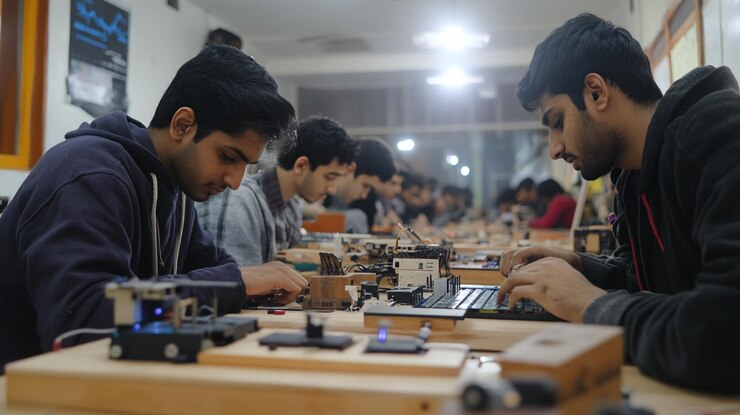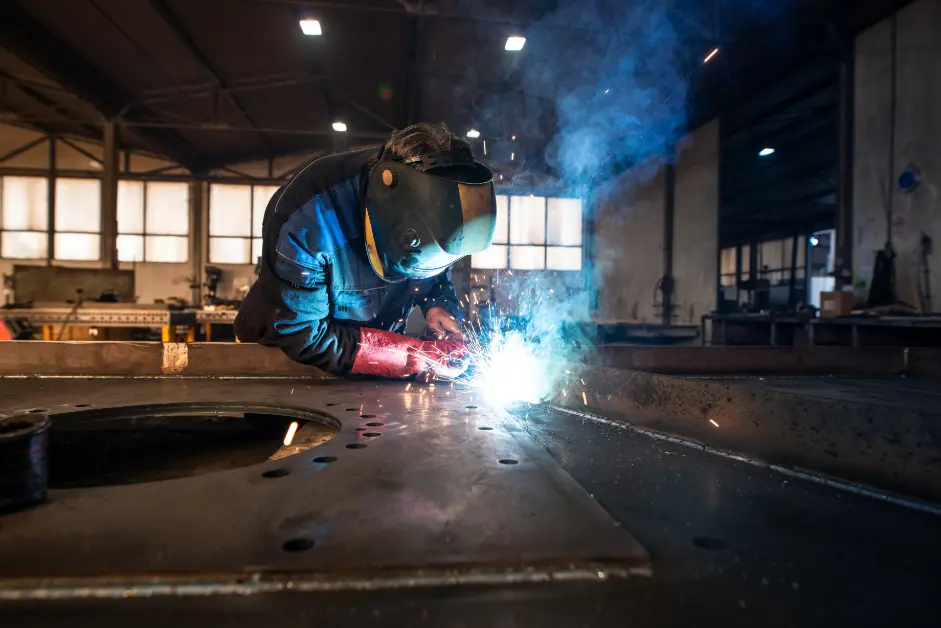Have you ever looked at a giant bridge, a shiny new car, or a tall skyscraper and wondered, “How did they make that?” If so, you’re already thinking like a fabricator! Fabricators are the people behind the scenes who cut, shape, and put together metal parts to build all kinds of things. Whether it’s a small machine part or a giant building frame, fabricators make it happen.
In this blog post, we’re going to break down everything you need to know about becoming a fabricator in a way that’s simple and easy to understand. Whether you’re a student curious about cool careers, or someone looking for a skilled trade job, this guide is for you.
What Is a Fabricator?
A fabricator is a skilled worker who creates products or parts by cutting, bending, welding, and assembling materials—most commonly metal. They work in many industries like construction, manufacturing, shipbuilding, and even aerospace.
Fabricators use a mix of tools and machines to shape raw materials into finished products. They might work in a workshop or on a job site, depending on the type of fabrication they’re doing.
Why Fabrication Is So Important
Imagine trying to build a car without the metal parts that hold it together. Or building a house with no steel beams for support. That’s where fabricators come in. They help create the parts that make our world work.
Fabricators make:
Frames for buildings and bridges
Machine parts
Car and airplane bodies
Pipes and tanks
Furniture, tools, and equipment
Without fabricators, many things we use every day wouldn’t exist.
Types of Fabrication Jobs
There are different kinds of fabricators, depending on what they specialize in. Here are a few:
Sheet Metal Fabricator – Works with thin metal sheets to make things like ducts, panels, or car parts.
Structural Metal Fabricator – Builds heavy metal parts used in construction.
Pipe Fabricator – Specializes in cutting and assembling metal pipes for things like water or gas systems.
Welders – While not always called fabricators, many welders do fabrication work by joining metal pieces together.
Machinists – Use machines to cut and shape parts to very precise sizes.
Skills You Need to Be a Great Fabricator
You don’t have to be a genius to be a fabricator, but there are some skills and qualities that really help:
Good with your hands: You’ll use tools and machines every day.
Basic math skills: You need to measure things accurately and understand shapes and sizes.
Problem-solving: Sometimes things don’t fit or go wrong—you need to fix them.
Reading blueprints: These are like the instructions for building something.
Attention to detail: Small mistakes can cause big problems.
Physical strength and stamina: Fabrication can be hard work!
Don’t worry—you can learn these skills through training and practice.
Education and Training
You don’t need a college degree to become a fabricator, but some training is important. Here are your options:
1. High School Diploma or GED
This is usually the first step. In high school, focus on classes like:
Math
Science
Shop (if available)
Technical drawing
2. Technical or Trade School
Many schools offer short programs (6 months to 2 years) where you learn fabrication skills. You might earn a certificate or diploma in welding, metalworking, or industrial technology.
3. Apprenticeships
An apprenticeship is a paid job where you learn while working. You get real experience and learn from experts. These usually last 2-4 years.
4. Certifications
Getting certified shows employers that you know your stuff. Some popular certifications include:
AWS (American Welding Society)
NCCER (National Center for Construction Education and Research)
Tools and Equipment Fabricators Use
Fabricators use a lot of cool tools. Here are some common ones:
Welding machines
Metal shears and saws
Press brakes (for bending metal)
Grinders and sanders
Measuring tools (tape measure, calipers)
Safety gear (helmets, gloves, goggles)
If you like using tools and building things, this job will be fun for you!
A Day in the Life of a Fabricator
So, what does a fabricator actually do all day? Here’s a sample day:
Read blueprints or instructions for a new project
Measure and mark metal pieces
Cut or bend metal into shape
Weld or bolt parts together
Inspect your work to make sure it fits perfectly
Clean up and prepare for the next job
You might work in a factory, on a construction site, or in a metal shop. Some fabricators also travel to job sites to install what they build.
Pros and Cons of Being a Fabricator
Like any job, fabrication has its ups and downs.
Pros:
High demand for skilled workers
Good pay, especially with experience
Hands-on, creative work
You get to build real, useful things
You can start without a college degree
Cons:
Physically demanding work
Can be noisy or dirty
Must follow strict safety rules
Some jobs require standing all day or working in hot/cold places
But if you enjoy building, solving problems, and working with your hands, the pros definitely outweigh the cons.
Career Growth and Salary
As a new fabricator, you might start with basic tasks, but over time you can move up. You might become a:
Senior Fabricator
Supervisor
Shop Manager
Quality Control Inspector
Welding Inspector
Fabrication Engineer (with more training)
Average salary varies by country and experience. In many places, experienced fabricators earn good money and enjoy job stability.
Final Thoughts
Fabrication is more than just cutting and welding metal. It’s a creative, skilled trade where you turn ideas into real things. It’s a career that helps build the world around us, one piece at a time.
If you like working with your hands, solving problems, and building cool things, becoming a fabricator might be the perfect job for you.
Contact us at TMTVTS Tech Mech technical training school in Pakistan to get enroll in Fabrication.





